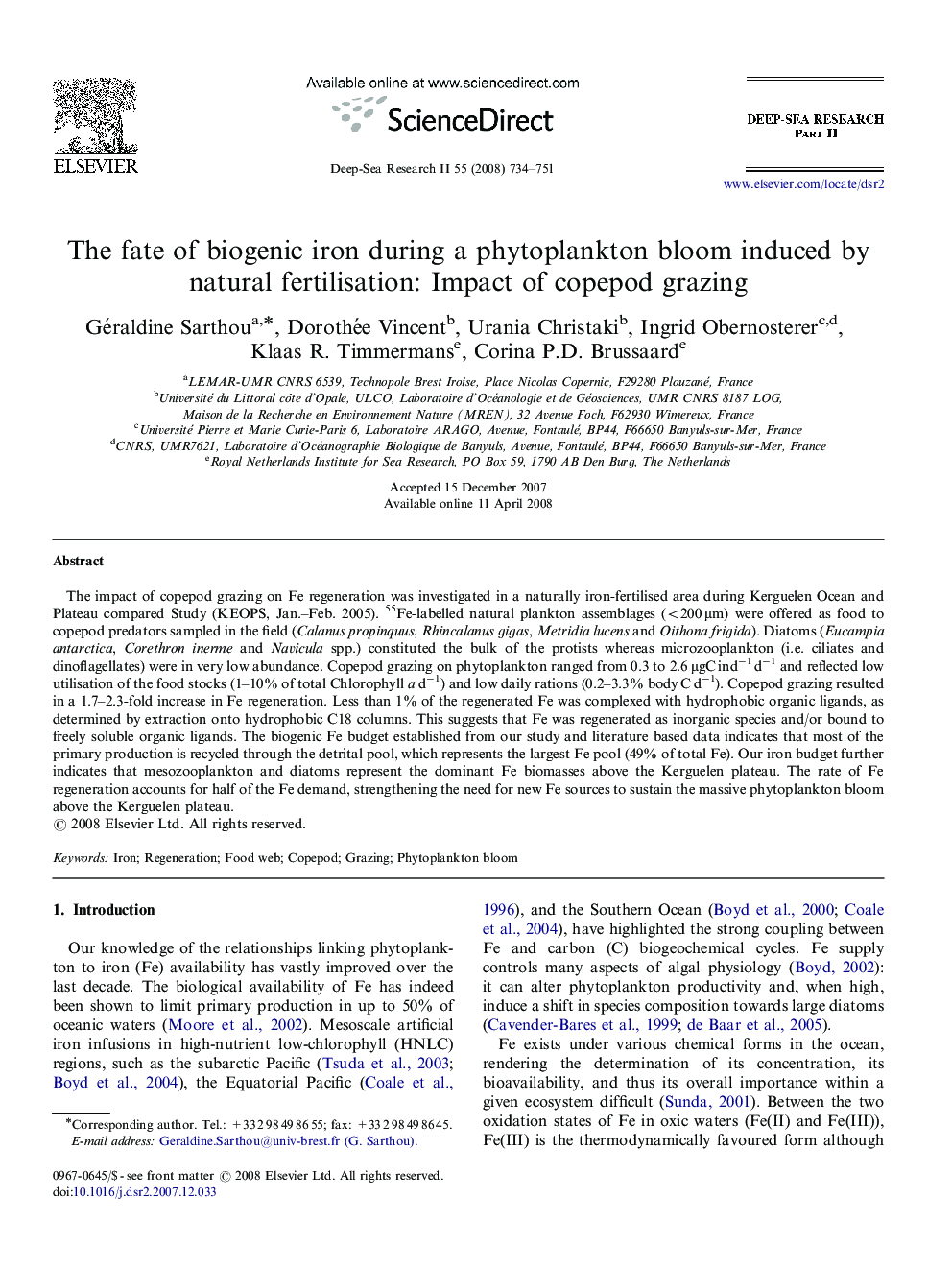| Article ID | Journal | Published Year | Pages | File Type |
|---|---|---|---|---|
| 4537515 | Deep Sea Research Part II: Topical Studies in Oceanography | 2008 | 18 Pages |
The impact of copepod grazing on Fe regeneration was investigated in a naturally iron-fertilised area during Kerguelen Ocean and Plateau compared Study (KEOPS, Jan.–Feb. 2005). 55Fe-labelled natural plankton assemblages (<200 μm) were offered as food to copepod predators sampled in the field (Calanus propinquus, Rhincalanus gigas, Metridia lucens and Oithona frigida). Diatoms (Eucampia antarctica, Corethron inerme and Navicula spp.) constituted the bulk of the protists whereas microzooplankton (i.e. ciliates and dinoflagellates) were in very low abundance. Copepod grazing on phytoplankton ranged from 0.3 to 2.6 μgC ind−1 d−1 and reflected low utilisation of the food stocks (1–10% of total Chlorophyll a d−1) and low daily rations (0.2–3.3% body C d−1). Copepod grazing resulted in a 1.7–2.3-fold increase in Fe regeneration. Less than 1% of the regenerated Fe was complexed with hydrophobic organic ligands, as determined by extraction onto hydrophobic C18 columns. This suggests that Fe was regenerated as inorganic species and/or bound to freely soluble organic ligands. The biogenic Fe budget established from our study and literature based data indicates that most of the primary production is recycled through the detrital pool, which represents the largest Fe pool (49% of total Fe). Our iron budget further indicates that mesozooplankton and diatoms represent the dominant Fe biomasses above the Kerguelen plateau. The rate of Fe regeneration accounts for half of the Fe demand, strengthening the need for new Fe sources to sustain the massive phytoplankton bloom above the Kerguelen plateau.
